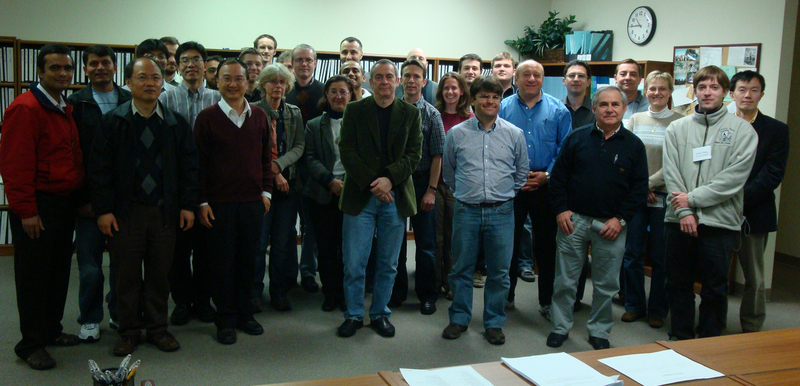
at the
American Institute of Mathematics, San Jose, California
organized by
Peter Constantin, Diego Cordoba, and Jiahong Wu
These equations are proposed for simultaneous study because of the striking analogies between them. The 2D inviscid surface QG equation serves as a lower dimensional model of the 3D Euler equations in additional to its geophysical relevance. These equations have been rather intensely studied by quite a number of researchers and in the past few years there has been important progress on various topics related to the fundamental issue of global existence and smoothness. As recently shown by Kiselev, Nazarov and Volberg for the periodic case and by Caffarelli and Vasseur for the whole space case, the 2D surface QG equation with critical dissipation possesses a unique global smooth solution for any smooth data. The works of D. Cordoba and of D. Cordoba and Fefferman have ruled out several finite-time singularity scenarios for the Euler and the inviscid QG equations, such as the simple hyperbolic type. The geometric criteria of Constantin, Majda and Fefferman relating the regularity of the direction of the vorticity field to global smoothness of solutions for the 3D Euler equations have recently been improved by T. Hou and his collaborators. Analytic regularity criteria for these equations have been further developed and pushed to weak functional settings such as Besov spaces with negative indices. A few new one-dimensional models retaining crucial features of the 3D Euler equations have newly been constructed. New computational results to the 3D Euler and the 2D surface QG equation have also appeared in the past few years.
These recent accomplishments have inspired us to look for a complete solution of the fundamental issue on global existence and smoothness for these equations. More precisely, this workshop will focus on three major topics:
The workshop schedule.
A report on the workshop activities.
Papers arising from the workshop: